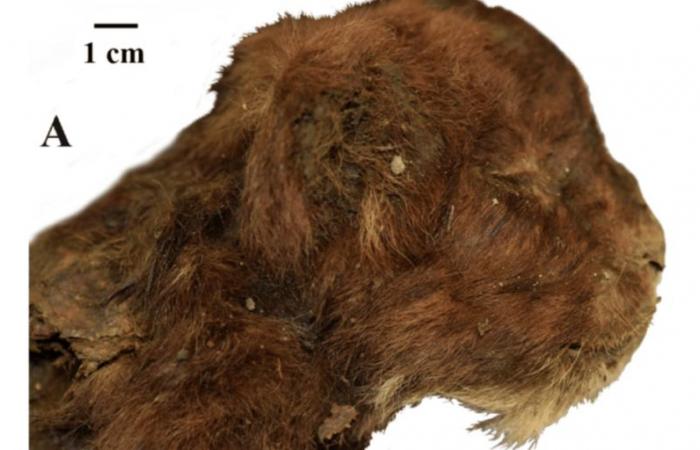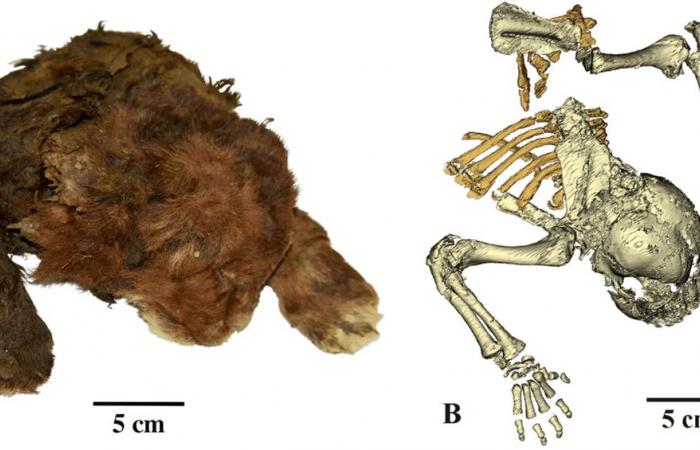Sensation im Permafrost –
Young saber-toothed tiger discovered in eternal ice
The discovery of a mummy of a small saber-toothed tiger in Siberia is a sensation: the remains of the prehistoric predator are exceptionally well preserved.
Published today at 4:07 p.m
The saber-toothed kitten lived over 35,000 years ago – but was just three weeks old at the time of death.
Foto: Lopatin et al. / Scientific Reports (CC BY 4.0)
Subscribe now and benefit from the read-aloud function.
BotTalk
Spherical paws, round head and plush dark fur: A Russian research team has found exceptionally well-preserved remains of a partially mummified saber-tooth tiger in the Siberian permafrost. However, this prehistoric predator doesn’t seem scary – the kitten was just three weeks old when it died.
Like the research group in Scientific journal “Scientifc Reports” Reportedly, the animal was discovered in 2020 near the Badjaricha River in the Yakutia region above the Arctic Circle, where it had been preserved in a chunk of ice for thousands of years. Using radiocarbon dating, the scientists determined that the saber-toothed cat lived around 35,500 to 37,000 years ago, i.e. in the late Pleistocene.
According to the researchers, the kitten belonged to the now extinct species Homotherium latidens. Although these are correctly saber-toothed cats, they are also often referred to as saber-toothed tigers.
Well-preserved front body: Compared to a lion cub, the prehistoric cub has a more muscular neck region and darker fur.
Foto: Lopatin et al. / Scientific Reports (CC BY 4.0)
The kitten’s head and even individual whiskers, the front legs with the clawed paws and the front body of the animal are preserved in detail. Bones from the hips and hind legs were also found.
The research team compared the remains with the anatomy of modern lion cubs of the same age and found some differences. In the study, the authors particularly emphasize the thicker, muscular neck region, the smaller ears and longer forelimbs of the saber-toothed cat, as well as the greatly shortened and widened nose. The prehistoric cub also had thicker, darker fur and wider, rounded paws – probably an adaptation to the cold environment and running in the snow.
Overall, the discovery of the Homotherium latidens mummy in Yakutia expands understanding of the distribution of the genus and confirms its presence in the late Pleistocene of Asia, the study says. And further: “For the first time in the history of paleontological research, the external appearance of an extinct mammal that has no counterpart in the modern fauna was directly examined.”
Under suspicion
Get the background information on current court cases that are affecting Switzerland.
More newsletters
Log in
DPA/jaw
Found an error? Report now.
0 comments







